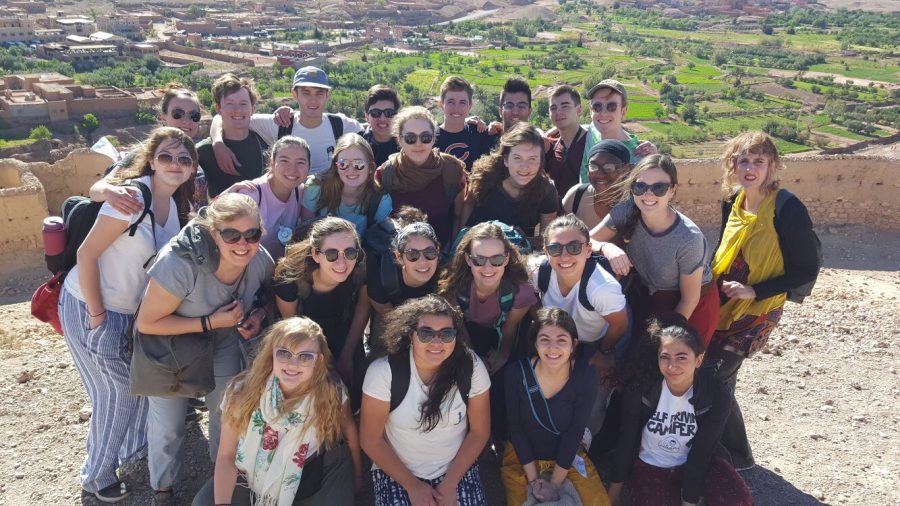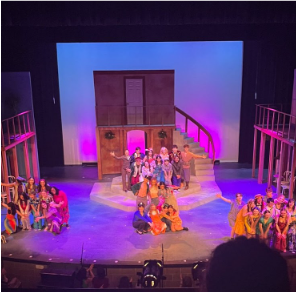Multilingualism of Morocco
Junior reflects on international influence after visiting Morocco
French students pose for a group photo in Morocco.
Sitting at the tip of Africa, only 20 miles from Spain, lies the Muslim country of Morocco. While traveling through its mountains and coastal cities, the influence of many different cultures is apparent- most obviously reflected in the diversity of languages spoken throughout the country. In touristy cities and towns, such as Marrakech and Ait Benhaddou, most shop owners have an expansive knowledge of different languages so that they can barter with customers. But even in smaller towns and less tourist-heavy areas, people are fluent in more than their native language, likely due the importance of languages in Moroccan public education.
Schools teach students in standard Arabic. Once they hit third or fourth grade, students begin learning French. While this may seem similar to our language education in the United States, it is far from the same. Amazigh, or Berber, peoples make up 40 percent of the population. In Amazigh communities, most children grow up speaking an Amazigh language. So when children start school, they are immersed in a completely new language.
When I visited Morocco over spring break with a group of Jones students and teachers, one of our group leaders, a Moroccan native, explained to us that being immersed in a new language at school was an adjustment. However, he said, once students could speak standard Arabic, they were able to learn Moroccan Arabic, a dialect that has influences from Amazigh, Latin, French and Spanish languages.
Many educated adults in Morocco are multilingual. In the U.S., that is harder to come by. When we visited a school in the Sbiti Village, a rural village near the bottom of the Atlas Mountains, we all got the opportunity to talk to students. Some Jones kids even started a soccer game with a group of students. Speaking to some of the fourth or fifth grade children was surprising. Their French skills were extremely impressive. At their age, I was taking in Spanish, and I could barely say a sentence. After interacting with those students, it became clear that there was a lack of interest in foreign language at home, a problem which is rooted in education. If our education system made language education more important, the number of multilingual people in the U.S. would exponentially grow.

HOBBIES: Traveling and Netflix
FAVORITE MOVIE: Inglorious Bastards
FAVORITE CLASS: Journalism
IN TEN YEARS: Traveling as a journalist
ONE WORD TO DESCRIBE...










